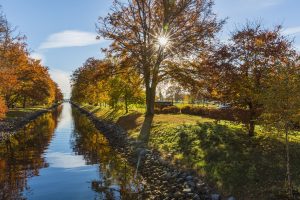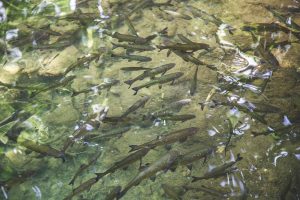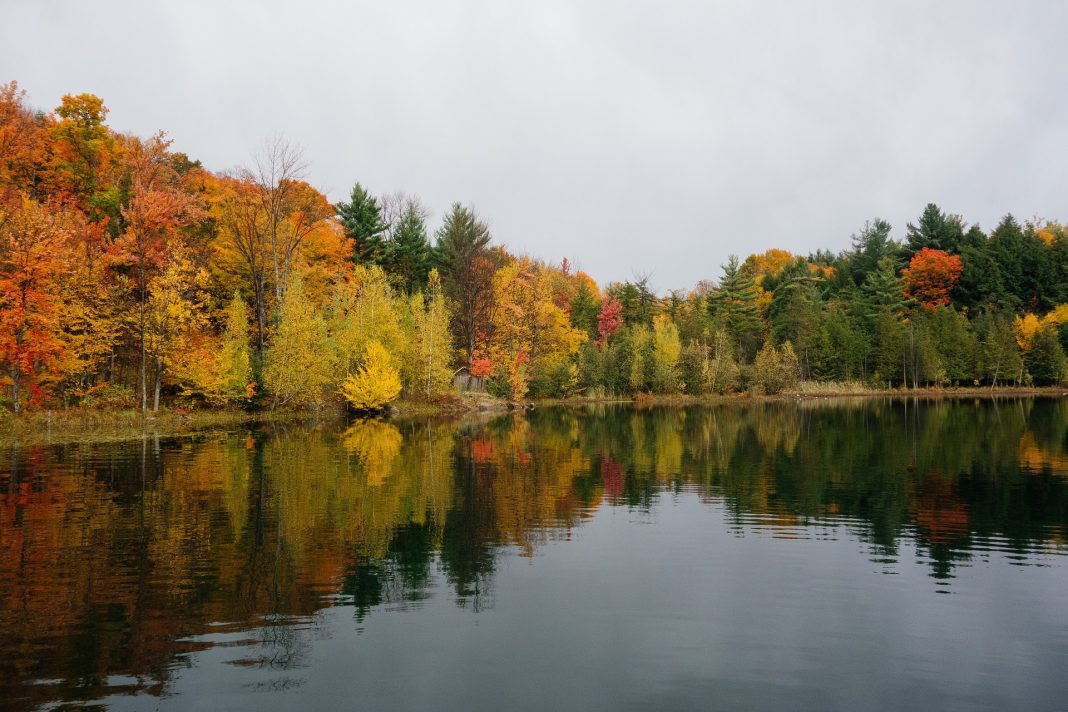Fishing the fall transition can be fast-paced, or slower than a line at the DMV. Fall is upon us, well at least here in El Paso that’s how it feels. It has been 75 degrees on average for the better part of a week now. In most of the U.S., the leaves will start changing, the temps will begin to drop, and fish will start transitioning to get ready for winter. Here are some tips to help you finish out the season strong.
Fishing the first cold front

In the fall, fish will be transitioning due to the weather changing. Much like bears, fish will start to feed like crazy and fatten up for winter with the weather change. The first cold front may not be enough for you to start preparing for Santa, but it is enough to make our fishy friends think winter is coming.
When that first cold front hits, get out on the water. Look for baitfish jumping out of the water closer towards the end of early-morning hours, and towards dusk. Don’t be afraid to fish in the afternoon during a cold front either. Predatory fish in transition will bite almost anything during peak feeding times. If you can spot a frenzy I recommend using a crankbait (I recommend Strike King Pro-Model Series 5) or a spinnerbait (I recommend Booyah counter strike spinnerbaits). You can also use inline spinners, like a rooster tail, as well.
Start fishing creeks

Baitfish will start pushing back into creeks and rivers off of main bodies of water when transitioning to fall. The water in these areas will be more comfortable for fish as the temperatures begin to drop. Where the baitfish go, so will the fish species you are looking for.
Marina’s, Bays, and Coves
I love fishing marina’s almost any time, but in the fall they have produced quality fish for me as much as creeks have. Fish look at marinas, bays, and other wind protected portions of water that are more shallow just as much as they look at creeks for warmer water. For fishing in creeks and wind-protected areas, I recommend using Texas-rigged soft plastics, like Gary Yamamoto Senko Worms; cast over rocky drop-offs, under docks, or directly parallel to the drop-off & docks.
Find schools

In many cases, fish like black bass species will school together when feeding around the transitional phase in fall. Fishing out in a boat and using a fish finder will help you identify these schools, but don’t expect every school to produce quality fish. By this time, if anything 5lbs and over is schooling around smaller fish, they will be smart to your techniques. Get creative with presentations here, and big. Using larger crankbaits, or large soft plastics will entice larger fish to bite in the fall.
Non-fall transition fish
The second portion of fall fishing (at least early fall) is fish that are not in transition. These fish haven’t accepted summer has ended yet, and are still stubborn biters. For stubborn biting fish, slowing down your fishing is going to produce more bites. Jigging still comes into play here around cover spots such as weeds, logs, and boulders.
Fall fishing, in my opinion, is the most fun time to fish. Although you might not come home with a full live well, it’s challenging and creates adaptive anglers. So get out on your boat and try fishing the fall transition. Tight lines everyone!
For more of the Outdoors check out my, and fellow MING writer Mike Heimdall, outdoor page Cold Water Outdoors on Facebook, Instagram (@coldwateroutdoors), and Twitter. Share your pictures and stories with us!












